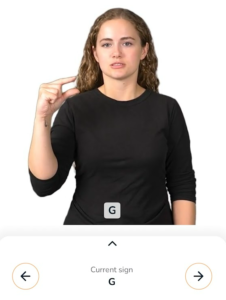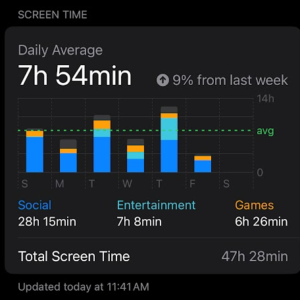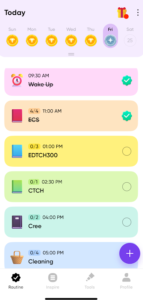As the weeks go on, finding new apps for my ASL learning journey becomes increasingly harder. I could download an app with little to no user-access and blog about how it’s a terrible app and not to download it or buy it when it’s demanded. However, the reason I’m learning ASL is for such an amazing purpose; making communication and equity a priority for any student who comes into my classroom. So, I scrolled on the app store for a good few minutes, passing apps that were two stars and cost money to download. Eventually, I came across some friendly-looking apps with pretty good reviews. With the little ‘ding’ of confirmation, I downloaded ASLingo.
ASLingo
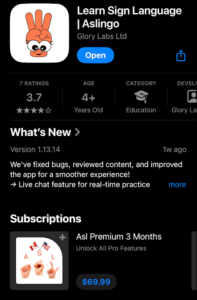
ASLingo is quite similar to Lingvano, one of the apps I reviewed in a previous post. The app starts you off with lessons on Greetings. Once you complete the four mini-lessons, there is a small quiz/recap of the lesson, then you can move onto the next one. I loved this format because the greetings are some of the most-used signs in ASL. This is also a great learning path for me, as I love the structure of lessons and quizzes over trying to choose and figure all of it out on my own. I also appreciated these lessons because I could see a great amount of variation.
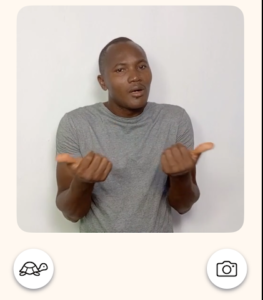
For example: “how.” In a previous post, I gave two variations of how, including it in a video. In ASLingo, they gave another variation, one that was similar, and in my opinion, easier. All you have to do is point your thumbs outwards and bring your hands from together to outward.
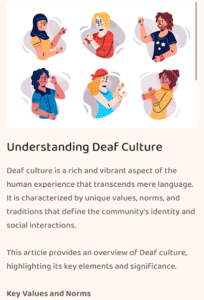 My favourite aspect of the app is the Journal section. In the journal, they have topics for advocacy and culture. On the side I’ve provided an example on the Understanding Deaf Culture journal. When you click on it, it gives you a few quick paragraphs of information on the topic, allowing the user to research and develop their ASL understanding more in-depth.
My favourite aspect of the app is the Journal section. In the journal, they have topics for advocacy and culture. On the side I’ve provided an example on the Understanding Deaf Culture journal. When you click on it, it gives you a few quick paragraphs of information on the topic, allowing the user to research and develop their ASL understanding more in-depth.
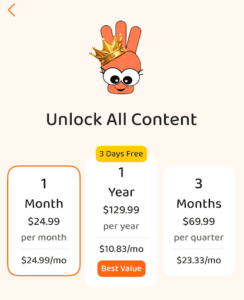
I compared this app to Lingvano because it was like a copy-paste: the colour scheme, the formatting, and access to dictionary, lesson recaps, etc. The apps are extremely similar in these regards, which made ASLingo a favourite fairly quickly. However, there is a downside. You only get a few days worth of a free trial. After that, you have to pay for most of the features, such as flashcards/recaps, lessons, etc., essentially only leaving the dictionary. As a beginner learning ASL, this app is a great format and source for ASL culture, however, due to the need of payment after only a few days, I would say Lingvano is a great alternative because of its accessibility without the need of payment, and similarity to ASLingo.
What I Learned This Week
This week I decided to learn some introductory sentences! I introduced myself “Hi, my name is Carys,” “I have two cats named Theo and Alice,” and “I’m becoming an Auntie in June.” Below is my video showing how to do the signs!
Thank you for joining me this week with my learning project journey!
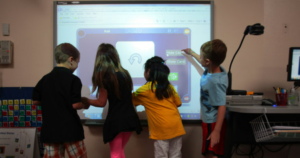
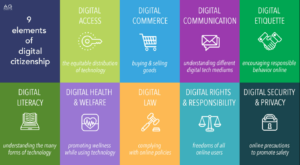
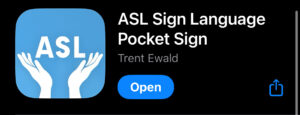
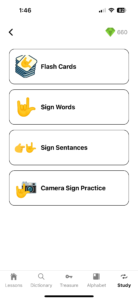
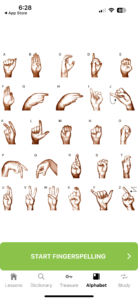 The app also includes a quick reference tab for the alphabet, as well as your daily lessons and a dictionary. This week, I used the dictionary to begin learning conversational ASL, where I would search a full sentence and the app would break up each word and have a demonstrator show you each sign slowly. I loved this feature because it made my introduction to sentences very easy to navigate. Now that I have the basics, I figured I could slowly begin incorporating some of the harder signs into my daily life.
The app also includes a quick reference tab for the alphabet, as well as your daily lessons and a dictionary. This week, I used the dictionary to begin learning conversational ASL, where I would search a full sentence and the app would break up each word and have a demonstrator show you each sign slowly. I loved this feature because it made my introduction to sentences very easy to navigate. Now that I have the basics, I figured I could slowly begin incorporating some of the harder signs into my daily life.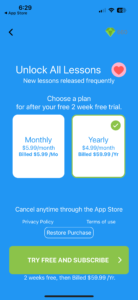 The only major con about this app is that you only have a two week free trial. Since I explored this app around a month ago, I was limited on what lessons I could try out. However, you are not limited on the dictionary, so even though this app is not completely free for an adequate learning style, I’ve decided to keep this app due to its usefulness in sentence structure.
The only major con about this app is that you only have a two week free trial. Since I explored this app around a month ago, I was limited on what lessons I could try out. However, you are not limited on the dictionary, so even though this app is not completely free for an adequate learning style, I’ve decided to keep this app due to its usefulness in sentence structure.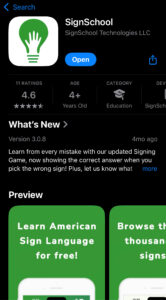 Regardless of Duolingo not teaching ASL, I love the layout of the app and how intriguing it can be for any age group. This week, knowing Duolingo does not offer ASL lessons, I turned to another app;
Regardless of Duolingo not teaching ASL, I love the layout of the app and how intriguing it can be for any age group. This week, knowing Duolingo does not offer ASL lessons, I turned to another app; 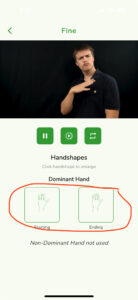
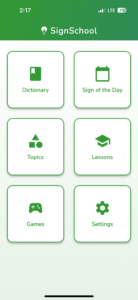
 One part of the app that I did love was the ‘Games’ section where you could do a fingerspelling game. What this would do is show a series of alphabetical signs in a certain order, with the option to slow it down, and then you would be able to type in your answer. I thought this was very beneficial for staying sharp on the alphabet and practicing fingerspelling and recognizing fingerspelling.
One part of the app that I did love was the ‘Games’ section where you could do a fingerspelling game. What this would do is show a series of alphabetical signs in a certain order, with the option to slow it down, and then you would be able to type in your answer. I thought this was very beneficial for staying sharp on the alphabet and practicing fingerspelling and recognizing fingerspelling. Does anyone remember
Does anyone remember  To balance all the challenges this poses for us, we must think about what we wanted when we were in school. Personally, I loved when teachers proposed assignments and projects that let us use our technology. For the future students, they will no doubt want to use technology in any way they can while in school. With phone bans it does halt many resources in elementary schools. However, children in elementary schools should have no use for project materials related to technology, unless they are nearing their middle school years and use a laptop for writing work. For middle school years and up, allowing the students to have the creative freedom to choose between using a cell phone or regular poster board will offer them more options and skills to put in their back pocket for adulthood.
To balance all the challenges this poses for us, we must think about what we wanted when we were in school. Personally, I loved when teachers proposed assignments and projects that let us use our technology. For the future students, they will no doubt want to use technology in any way they can while in school. With phone bans it does halt many resources in elementary schools. However, children in elementary schools should have no use for project materials related to technology, unless they are nearing their middle school years and use a laptop for writing work. For middle school years and up, allowing the students to have the creative freedom to choose between using a cell phone or regular poster board will offer them more options and skills to put in their back pocket for adulthood.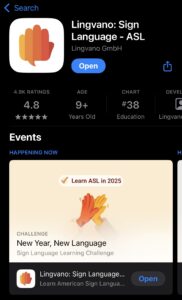

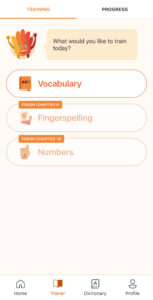
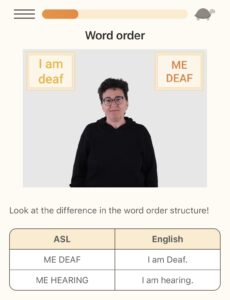
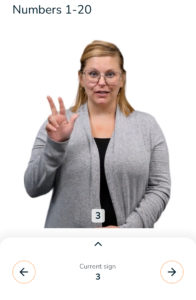 Through ASL Bloom, they show you how to use the numbers at a beginner level, making it obvious how your hand is supposed to look at every point. This was noticeable with the number ‘three.’ In the app, your palm faces away from you, but in the video your palm faces toward you. Another variation I noticed was with the numbers 16-19, where the way you move your hand went from a horizontal sweep in the app to a vertical turn in the video. The video also showed alternatives on how to do 16-19 by adding together the ‘ten’ followed by the remainder of your number. ex) to do 16, you would first do the sign for ‘ten,’ then follow it up by the sign for ‘six.’
Through ASL Bloom, they show you how to use the numbers at a beginner level, making it obvious how your hand is supposed to look at every point. This was noticeable with the number ‘three.’ In the app, your palm faces away from you, but in the video your palm faces toward you. Another variation I noticed was with the numbers 16-19, where the way you move your hand went from a horizontal sweep in the app to a vertical turn in the video. The video also showed alternatives on how to do 16-19 by adding together the ‘ten’ followed by the remainder of your number. ex) to do 16, you would first do the sign for ‘ten,’ then follow it up by the sign for ‘six.’
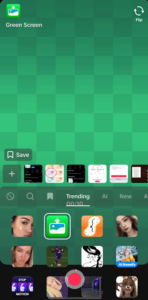
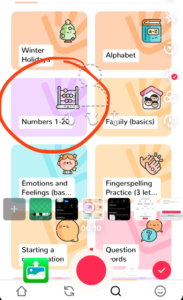
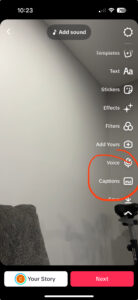
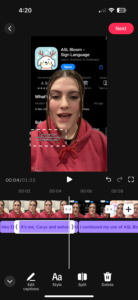
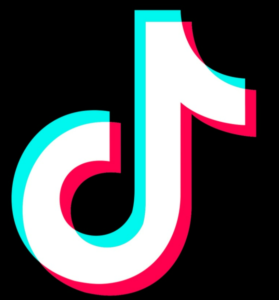
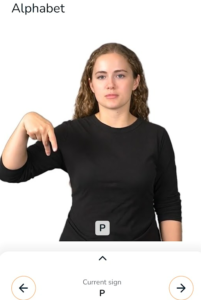 Some of the signs were a bit more difficult to learn, and were admittedly the ones that I was never able to learn all those years ago when I tried to learn the alphabet for fun. But this video I watched really helped me with the differences on the letters, like how you put your thumb between your ring and pinky finger for ‘M’ because it has three points for the bottom of the letter, and how you move your thumb in by one to have two points for the letter ‘N.’ It even helped me learn ‘P,’ which I’d always found most difficult, but is really only an upside-sown ‘K.’
Some of the signs were a bit more difficult to learn, and were admittedly the ones that I was never able to learn all those years ago when I tried to learn the alphabet for fun. But this video I watched really helped me with the differences on the letters, like how you put your thumb between your ring and pinky finger for ‘M’ because it has three points for the bottom of the letter, and how you move your thumb in by one to have two points for the letter ‘N.’ It even helped me learn ‘P,’ which I’d always found most difficult, but is really only an upside-sown ‘K.’